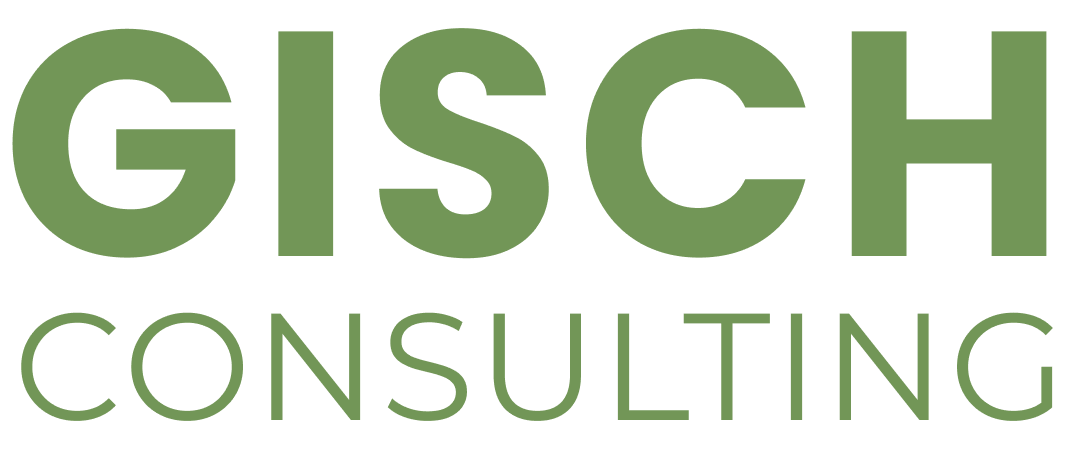How to Create Cross-Silo Collaboration: Six Leadership Lessons

‘Breaking down silos.’ It’s a management term I try to avoid for two reasons: Firstly, it’s a little negative and can cause anxiety. Secondly, we need silos in business, ones that group specialist departments, teams and places. According to Gillian Tett in The Silo Effect, humans naturally group together to create some structure to handle the complexity of our modern world.[1]
What we don’t want is when silo ‘walls’ hamper the sharing of insights or resources that could make our businesses work better or when departments or team focuses solely on their core duties to the exclusion of others.[2] Unfortunately, these situations are common, even more since the start of the pandemic.[3] It’s difficult to break down these walls – especially in bigger companies with established teams and traditional hierarchies. The challenges vary – including fragmented process ownership, power struggles and politics, and roles designed around parochial requirements – but they all contribute to higher internal complexity, the natural enemy of collaboration.[4] This can mean money is wasted, deadlines are missed, and mistakes are made.[5] It can also damage company culture.
So, I’m going to offer my take on this: True collaboration isn’t about breaking down silos; it’s about identifying them and then creating tailored channels and systems for knowledge sharing, shared effort, and cross-functional learning. Silos are a fact of life: people will naturally organise themselves in tribes according to their job role, vertical, personality type, speciality or location.
My whole career has been devoted to improving work practices. I’ve constantly relied on cross-silo collaboration to unlock many benefits, including greater productivity, higher levels of creativity and innovation, and the amplification of diverse voices. Companies that get it right are more agile, resilient, innovative, and more likely to have a competitive edge.
Personally, it also offers constant puzzles for me to work through – and that appeals to my Autistic ADHD profile. I tend to notice patterns and subtleties that are invisible to most people. This helps me to create effective bridges across silos and connect the right people and functions for the best performance.
As part of the research for a thesis, I’ve collected six lessons that build cross-silo leadership and collaboration.
[1] Johnson, J. (2020). Don’t break your silos down – master them. Source: Gov.uk
[2] McPherson, L. (2018). 5 Ways to Break Down Organizational Silos. Source: Zapier.
[3] Nawaz, S. (2021). 7 Strategies to Break Down Silos in Big Meetings. Source: Harvard Business Review.
[4] Schaubroeck, R et al. (2018). Making collaboration across functions a reality. Source: McKinsey
[5] Johnson, J. (2020). Don’t break your silos down – master them. Source: Gov.uk

1. Drive accessibility with technology and shared processes.
This covers two kinds of access: technical (software, internet, user interface barriers) and socio-political (such as permission levels and information sharing). In the new world of hybrid working, companies need to provide all workers with the opportunities to work seamlessly and without limitations wherever they are. This is where cloud-based software suites and high-performance PCs and laptops are needed for real-time interaction and higher productivity. All employees need the digital know-how to work with shared documents online and have access to the same software and file servers.
Within the socio-political access, using team communications software with tailored access rights and user groups can help drive better interaction for specific workflows across different locations. If you can offer a variety of digital ways to gather input, it can drive more collaboration. You can ask for responses via chat, do a quick poll to calibrate opinions, or have everyone add text to a shared document.[1] You can also create a shared workspace, such as Microsoft Teams or SharePoint that everyone can contribute to. Adding more avenues for interaction draws out the best ideas from all personality types and drives more engagement.
In summary, teams need the flexibility to access resources on demand and quickly or be granted privileged access to work together on a project. They also need to understand the common vision and company goals, how they contribute to the big picture, and how others contribute too.[2] This creates more empathy and encourages more information-sharing and less resource-hoarding.
[1] Nawaz, S. (2021). 7 Strategies to Break Down Silos in Big Meetings. Source: Harvard Business Review.
[2] McPherson, L. (2018). 5 Ways to Break Down Organizational Silos. Source: Zapier.

2. Building trust is essential.
The success of a cross-silo project depends on accessibility, relationships, and trust, both in people and technology. One way to build trust in people is to create smaller projects with cross-silo teams as a starting point and learning curve. It creates connections and requires employees to depend on each other. The second way is to create cross-functional groups with at least one member or representative from each core department. This will deter the silo mentality and develop interdepartmental relationships, transparency, and shared ownership.
One element to remember is the IKEA effect, which states that people who put creative effort into the early stages of a process will be more invested down the line. Getting more employees involved in major projects from the start will mean more of them will have an emotional stake in the work and will be more likely to share resources.[1]
Building trust in software and technology requires key upskilling and companywide Learning Management Systems (LMS). One of the most successful options here is to offer an on-demand digital training hub that employees can use remotely and on their own time.
[1] McPherson, L. (2018). 5 Ways to Break Down Organizational Silos. Source: Zapier.

3. Share & display tasks and information.
Before the days of cloud project management solutions and slick communication apps, teams used whiteboards, notes, and notice boards to share information in a communal space. These typically displayed task responsibilities, updates, overviews, or results. One of the lessons here is that specific people were responsible for updating these records, which turned them into gatekeepers of information. Technology now allows instant, real-time updates to virtual task boards, shared groups, or groups with tailored access. The upside is that now everyone can see what employees are working on and if they are either open to more tasks or overloaded. It enables a fairer distribution of work and cuts down on status check emails and the need to cover those topics in extra meetings.[1]
There is also one essential practice: every company should have an internal communications guide that includes the channels used and the rules around contact times and etiquette. Companies can make work easier for people if they specify channels for urgent and non-urgent issues.[2]
Research by Boston Consulting Group found that making downtime visible leads to greater job satisfaction and better work-life balance without compromising client service or company performance.[3]
[1] Markowitz, D. (2021). Productivity is about your Systems, Not Your People. Source: Harvard Business Review.
[2] Markowitz, D. (2021). Productivity is about your Systems, Not Your People. Source: Harvard Business Review.
[3] Perlow, A & Porter, J. (2009). Making Time Off Predictable—and Required. Source: Harvard Business Review.

4. Identify facilitators and blockers.
It can be challenging to identify them, but once you’ve investigated the busiest areas of production with the biggest bottlenecks, you will find blockers. In some cases, this will be employees who need assistance with their workload or require upskilling to do their job more effectively. Conversely, the workers with the most job cards will likely be the best facilitators, the employees who collaborate to get the most done.

5. Build bridges and use adhesives.
Every employee has unique skills, biases, preferences, and crucially, they have varying abilities to block or facilitate productivity within your company. In most businesses, there isn’t a consistent communications plan or framework that covers all business units. It’s best to build bridges deliberately designed to accommodate known differences between the work styles and information needs of domain experts and central information-sharing needs. Every team member should take responsibility for reaching out to other team members in different silos and recognise each other’s strengths and weaknesses. Research shows that employees who reach outside their silos to find colleagues with complementary expertise learn more, sell more, and gain skills faster.[1]
One way to do this is to establish interdepartmental liaisons that encourage communication between different teams. Sometimes called ‘cultural brokers’, they promote cross-boundary work in one of two ways: acting as a ‘bridge’ or as an ‘adhesive’.[2] Bridges are go-betweens, driving collaboration as they have considerable knowledge of both sides and know what each side needs. Adhesives bring people together and help build mutual understanding and lasting relationships.[3] Company leaders need to develop both by appointing internal talent or hiring people with multifunctional or multicultural backgrounds with excellent interpersonal skills.
[1] Edmondson, A, et al. (2019). Cross-Silo Leadership. Source: Harvard Business Review.
[2] Edmondson, A, et al. (2019). Cross-Silo Leadership. Source: Harvard Business Review.
[3] Edmondson, A, et al. (2019). Cross-Silo Leadership. Source: Harvard Business Review.

6. Understand the power dynamics.
In traditional organisations, the communication channels are vertical, where employees report upwards, and there aren’t any processes for cross-department or cross-functional discussion. Where there is communication, it’s generally held in formal meetings or town halls with little interaction. Suggestions are passed to line managers, who pass them further up the chain. In this way, only the most senior employees have a line of sight of everything happening, and their power rests with them.
It’s not just about breaking these vertical communications channels to become more lateral and company-wise; it also requires changing the habits of the vital role models. A culture of collaboration starts at the top, all employees will follow what they see in management, so it’s critical for top executives and managers to be models for resource and information-sharing.[1] It doesn’t end there: leaders need to create a company where it’s safe to ask questions at every level. They need to encourage employees to be curious and empathetic and ask them to actively consider other points of view.[2]
[1] McPherson, L. (2018). 5 Ways to Break Down Organizational Silos. Source: Zapier.
[2] Edmondson, A, et al. (2019). Cross-Silo Leadership. Source: Harvard Business Review.
The final thoughts
Silos are a part of our working lives. The solution isn’t to aim to ‘break’ all silos; it’s about identifying where siloed mentalities and working patterns are negative and then building transparent systems and processes to create new bridges and boundary-crossing habits, lateral communication channels and support for diverse voices. If the leaders of a company can get that right, employees will ask the right questions, learn to be more empathetic, and gain the skills they need to unlock company-wide collaboration.
About Me
Anita Gisch is a highly experienced project manager, consultant, and senior leader with a PhD in Information Systems under examination. Anita is a subject matter expert in company-wide transformation and systems optimisation and has led several leading cross-functional teams in various industries.

